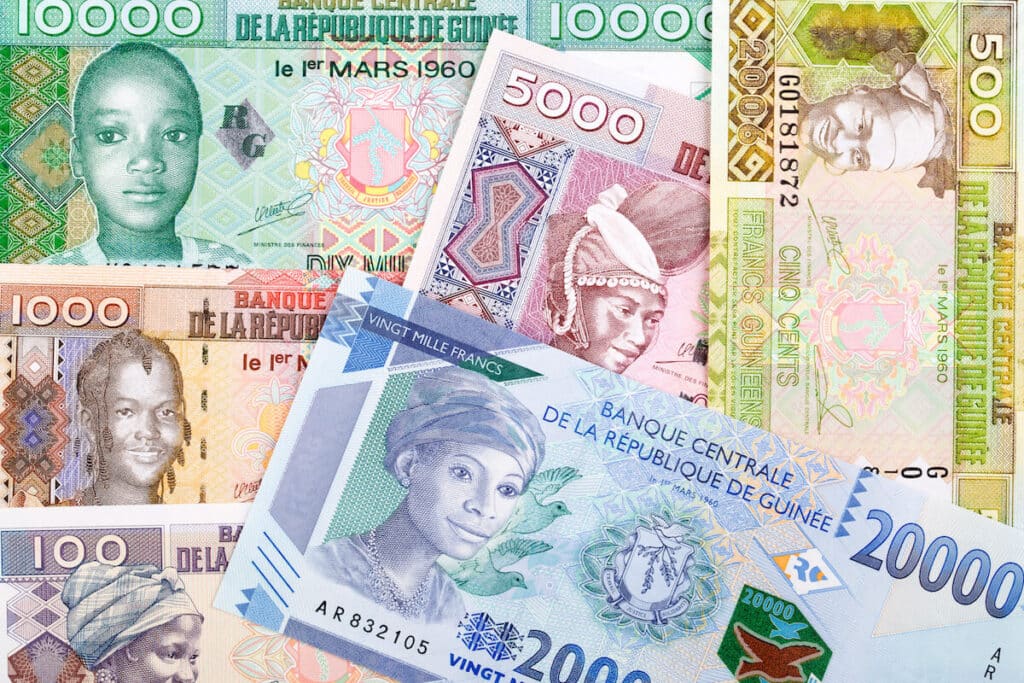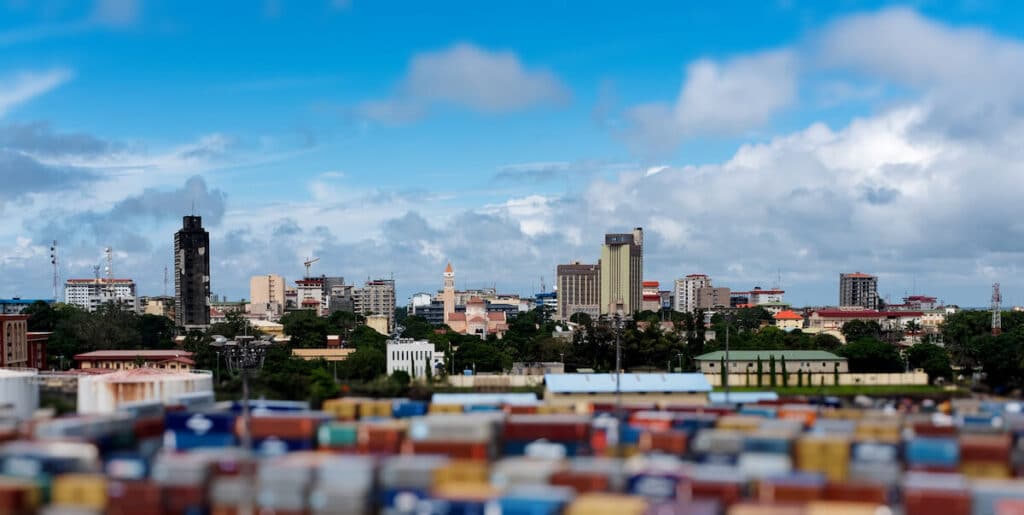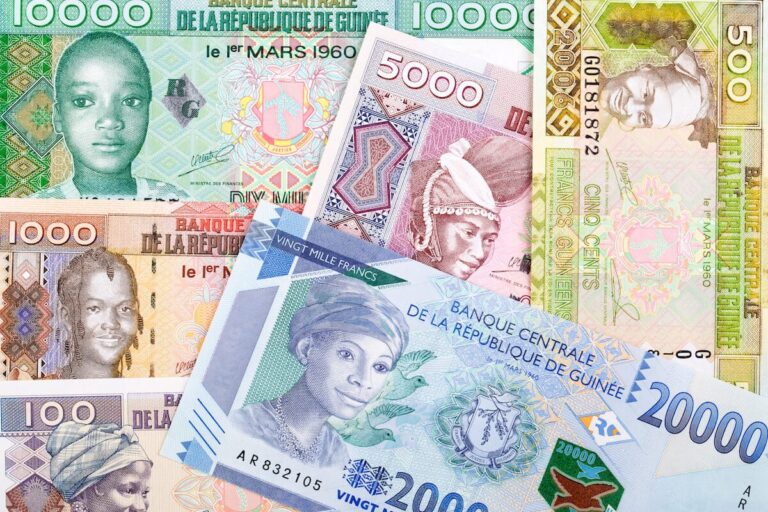The Guinean franc (GNF) is the official currency of the Republic of Guinea, a country in West Africa in the Guinea geographical region. Occasionally, it goes by the hyphenated name “Guinea-Conakry” to differentiate it from other nearby countries.
Although many of Guinea’s neighbors use the West African CFA franc, Guinea has had its own currency since 1959. Before sending money to friends or family in Guinea, let’s brush up on the history of the Guinea franc, including its banknotes and coinage.
Here’s what you need to know about Guinea currency, and how to look up the real-time exchange rate using a currency converter.
Guinea currency basics
The Central Bank of the Republic of Guinea is responsible for issuing the Guinea franc, with seven banknote denominations commonly seen in circulation:
- 100 francs
- 500 francs
- 1,000 francs
- 2,000 francs
- 5,000 francs
- 10,000 francs
- 20,000 francs
There are also 25 franc and 50 franc banknotes, but these are less common due to their low value. As for coins, you’ll find 1, 5, 10, 25, and 50 franc denominations.
The design of the Guinea franc changes with every issue, and there have been several commemorative editions to mark occasions like the 50th anniversary of the Guinea franc.
They all feature the Guinean coat of arms, as well as culturally significant images such as a banana harvest, Mount Nimba, the Kaleta hydroelectric dam, or a bauxite mine.
If you’re looking to exchange the Guinea franc for a foreign currency, you can use the currency code GNF to look it up on foreign exchange markets.
Within the country, you may see the abbreviations FG, Fr, or GFr to denote Guinean money.

History of Guinea’s currency
The country that’s now Guinea has a shared history with other West African countries, with the Ghana, Mali, and Songhai empires all exerting their influence on the region from as early as the 3rd century.
Gold played a major role from the start, both for decorative purposes and as currency in the form of gold dust, wire, and nuggets.
Portuguese traders established ports in the 15th century, and France claimed the territory as part of the French Empire in the late 1800s. The French military called the colony Rivières du Sud, meaning “southern rivers,” before changing the name to French Guinea.
France introduced the CFA franc in 1945 to provide a common currency throughout its West and Central African territories, including Guinea. You’ll find other versions of this currency in countries like Senegal and Cameroon.
After gaining its independence in 1958, the Republic of Guinea developed its own legal tender, and the first Guinea franc arrived on the scene in 1959.
7 surprising facts about Guinean currency

Due to its geographical location and natural resources, the Republic of Guinea has had a major role in the economy of the region—and an effect on other currencies of the world.
Here are seven surprising facts about Guinea’s currency that you may not know:
1. ‘Guinea’ is also the name of an old English coin.
If you hear someone mention a “Guinea coin” in a historical context, chances are they aren’t talking about the Guinea franc. The guinea is the name of a gold coin that was first minted in 1663 and used throughout the British Empire until 1814.
So, why was it called the guinea? They made the coin with gold from the Guinea region, and then it became the name of the coin itself.
At one point, a guinea was worth 21 shillings or 1.05 pounds. The guinea is no longer legal tender in the United Kingdom, but it was valid until Decimal Day in 1971, when decimalisation changed the way money was represented in the U.K. system.
2. The Republic of Guinea previously used the CFA franc.
From 1945 to 1958, Guinea used the French colonial currency, the CFA franc. After the end of the colonial period, the CFA franc evolved into two different currencies: the West African CFA franc and the Central African CFA franc.
These two currencies have the same value and are interchangeable in all 14 countries that use them. Since they’re pegged to the euro (EUR), they don’t float freely on global currency markets and have a fixed value of €1 to 655.957 CFA francs.
The Republic of Guinea, however, never joined the currency union that uses the CFA franc. It issues its own currency with its own free-floating exchange rate.
3. There are no centimes in circulation.
Like the CFA francs, one Guinea franc consists of 100 centimes—but you won’t find centimes anywhere in Guinea.
That’s because the value of the centime is so low that the Central Bank has never issued any denomination smaller than 1 GNF.
4. Guinea briefly switched to the syli in the 1970s.
In 1971, the country introduced the syli, a currency made up of 100 cauris. Although the Central Bank issued syli coins and banknotes, at 10 francs to 1 syli, they didn’t last long: In 1985, Guinea switched back to the franc, with 1 franc equal to 1 syli.
5. Guinea banknotes use the French language.
If you look at a Guinea banknote, you’ll notice that most of the writing is in French. For example, 20,000 francs is written as “vingt mille francs guinéens.”
This is because Guinea was a French territory until 1958. In fact, the official language of the Republic of Guinea is still French.
6. A British printing house designed the early Guinean franc.
Despite getting its name from French currency, several early print runs of the Guinean franc happened in the United Kingdom.
The iconic De La Rue printing house, which is the largest company of its kind in the world, designed an early set of banknotes.
De La Rue has worked with at least 140 countries and has designed over one-third of the world’s currency denominations.
7. Guinean banknotes have numerous security features.
In addition to their beautiful designs, Guinean banknotes contain holographic patches, security strips, and other advanced features to prevent fraud.
Over the years, these have included various watermarks, diamond-shaped patches, and the letters “RG” (Republic of Guinea) to denote their authenticity.
Understanding Guinea franc exchange rates
The Guinea franc is a free-floating currency, which means its value fluctuates compared to other global currencies, such as the U.S. dollar (USD) or the Canadian dollar (CAD).
In recent years, Guinea’s economy has experienced high inflation—12.60% in 2021—but the country remains a major exporter of gold, bauxite, and other natural resources.
If you intend to travel to Guinea, you’ll likely want to take cash with you in your local currency and convert it to Guinea francs when you arrive, since ATMs have small withdrawal limits and credit card transactions are rare.
You can also use a money transfer service to send money to Guinea, with options for receiving funds via a bank deposit, mobile money, or cash pickup.
Send money to Guinea from overseas

When you need to send funds to loved ones in Guinea, Remitly makes it easy with a secure mobile app and transparent transaction fees.
You can send your transfer with a debit card or credit card and track it every step of the way.
Download the app, and we’ll show you how to get started today.
